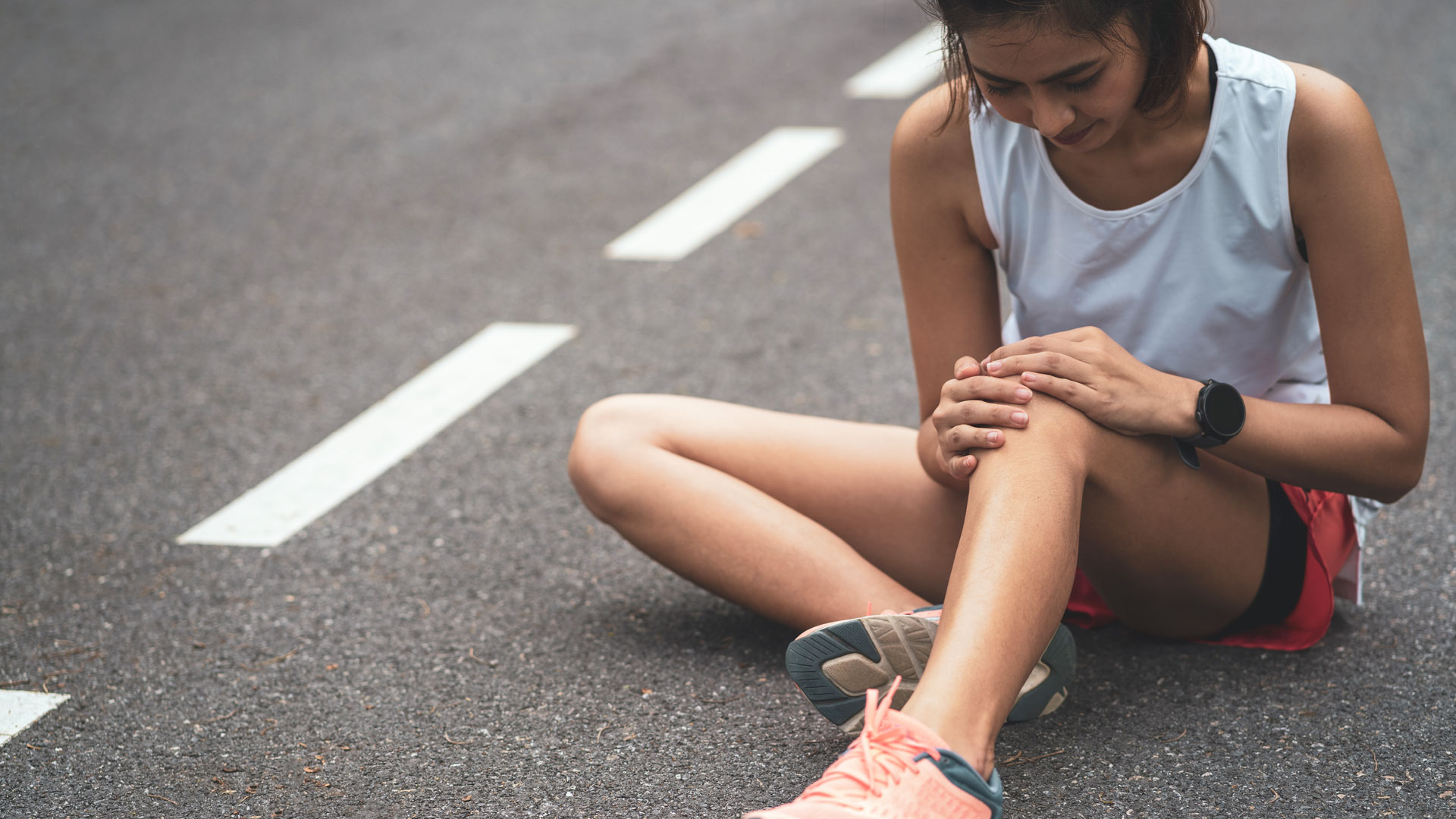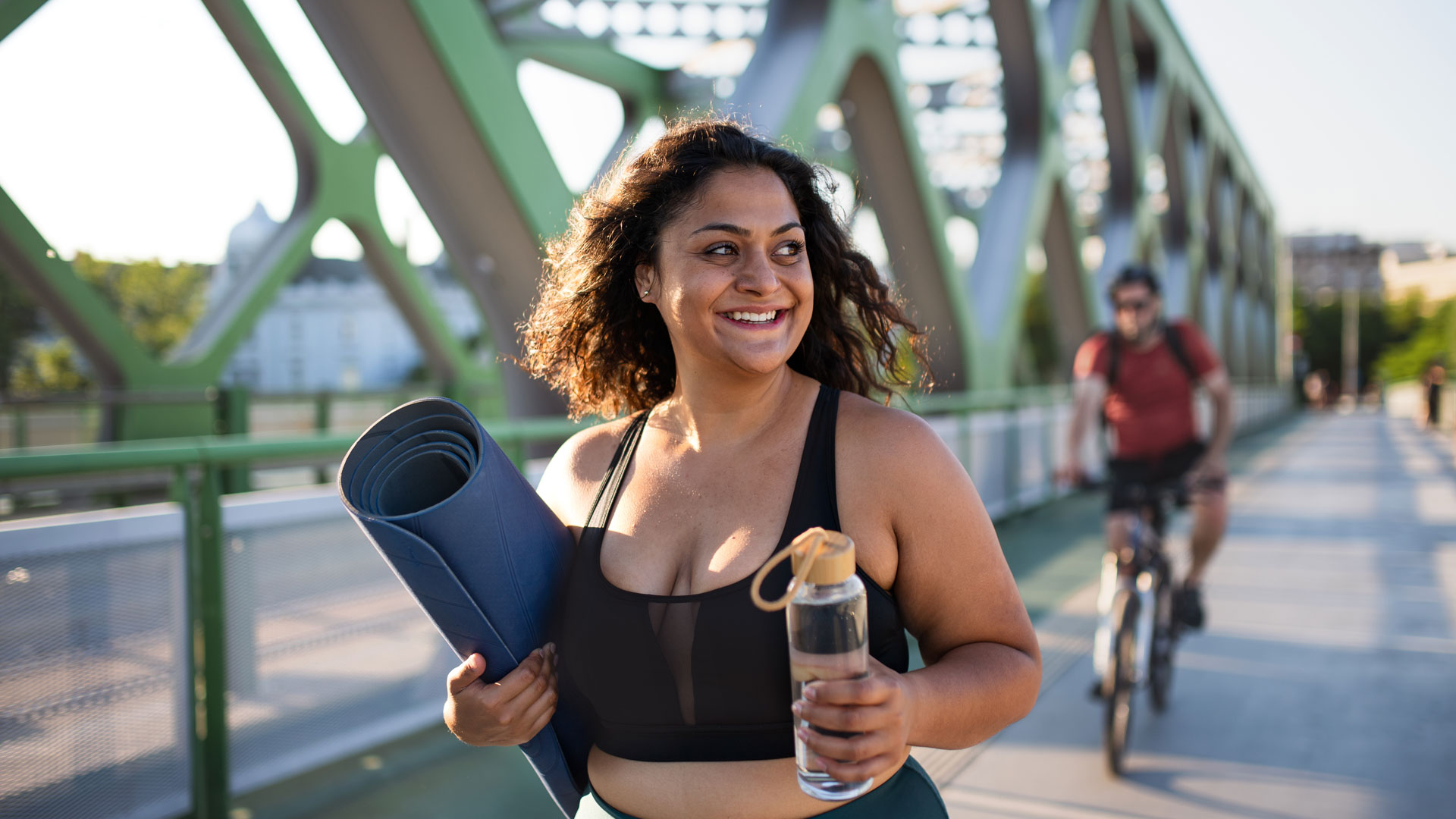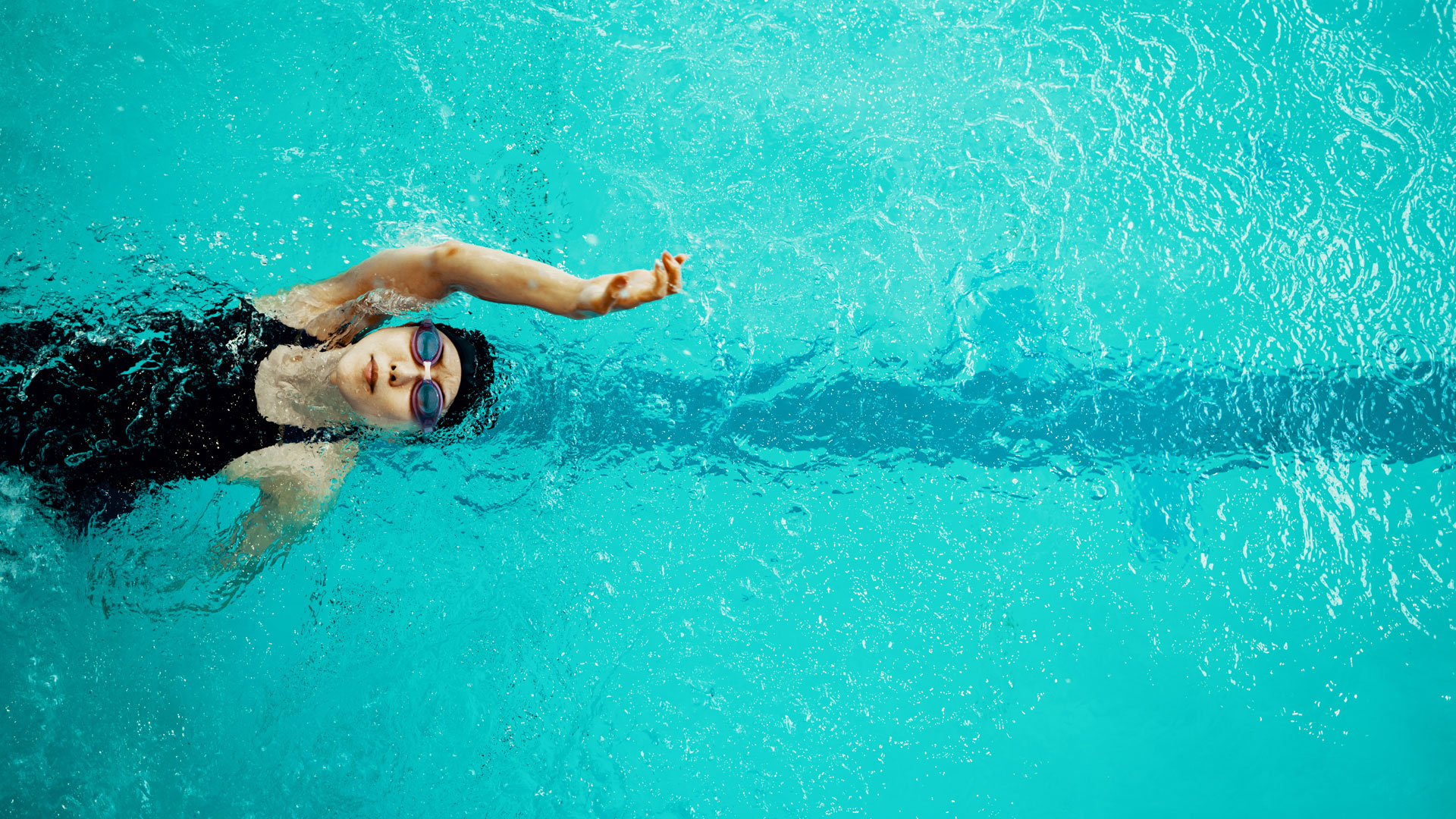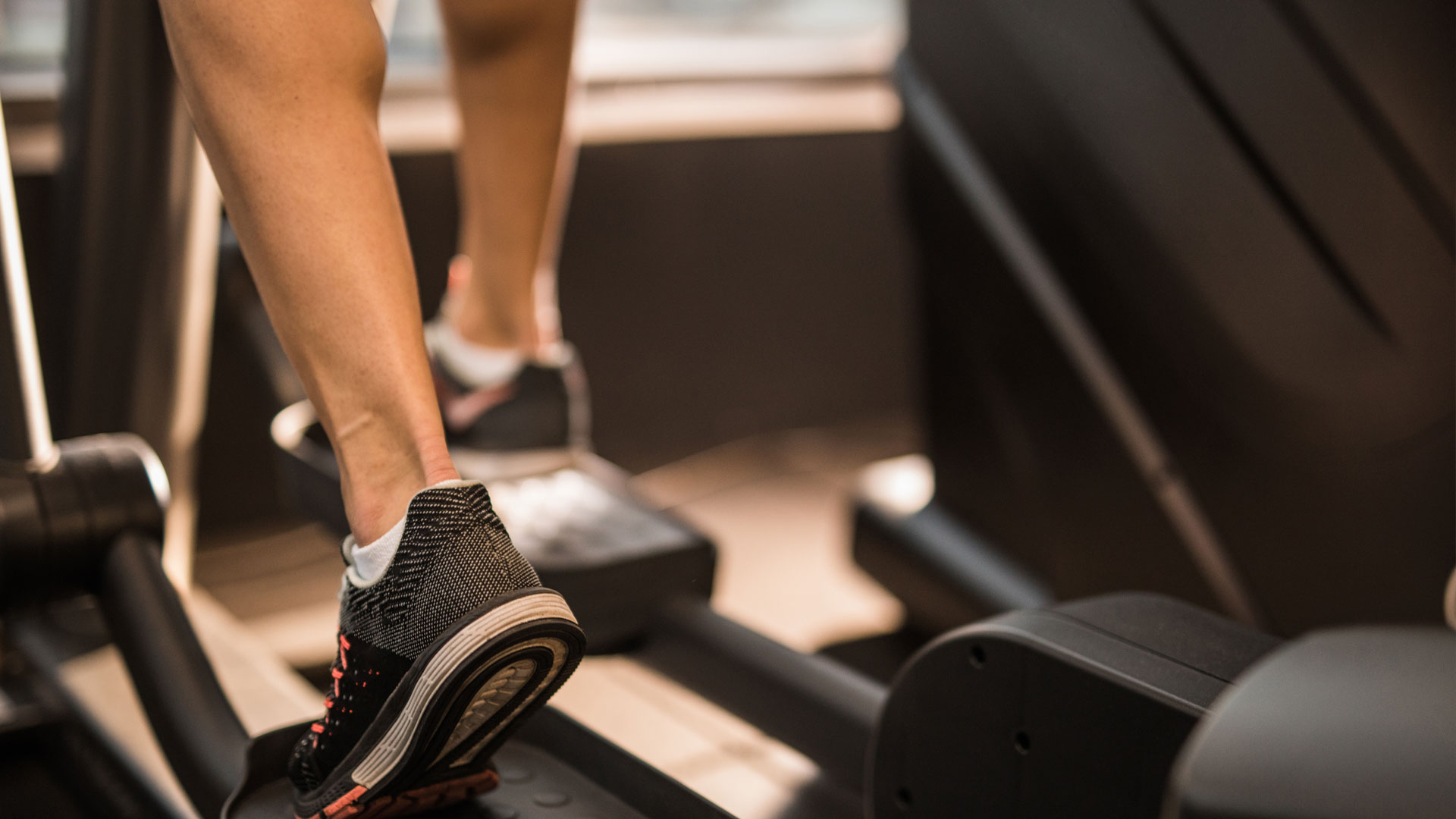Workout for bad knees: how to safely exercise with sore knees
Looking for a workout for bad knees? We spoke to a physiotherapist to find out which exercises are safe to try


A workout for bad knees might sound like a recipe for disaster and if you’re in pain, you may be wondering if you should exercise at all. The good news is exercise may actually help with some types of knee pain rather than make it worse.
So what kind of workout is suitable for bad knees? Experts say to focus on lower-impact exercises, like those you can do in the swimming pool or on one of the best elliptical machines. Of course, it’s also important to note that you should follow medical advice if your knee is injured, and if you are in any pain when you exercise, then it’s best to stop.
A systemic review of studies found that only 13% of men and 8% of women with knee and hip osteoarthritis met physical activity guidelines and recommended daily steps. But taking part in regular exercise can help alleviate swelling and stiffness, improve the range of motion in the joint and strengthen the muscles surrounding the knee.
Can you exercise with sore knees?
Exercising a knee that’s sore or arthritic may seem contradictory, but exercise can often be better for your knees than keeping them still. Not moving your knee may cause it to stiffen, making it harder to go about your daily activities.
Physiotherapist Rebecca Sessions says, “Exercise is super important with sore knees to ensure that you keep a good range of movement and strength in the main muscle groups supporting the knee. Depending on the severity of pain, exercise is considered anything from bending and straightening the leg (range of movement) all the way through to walking, cycling, swimming, and running.”
Before starting an exercise program for knee pain, talk to your doctor or physical therapist to make sure the exercises are safe for you.
How to help sore knees
Finding relief from knee pain often depends on the underlying cause. Carrying excess weight can impact your knees, with the Cleveland Clinic stating that every extra pound of weight adds 2-4 lbs of excess pressure on your knees. A 2013 study found that adults who were overweight and had knee osteoarthritis experienced a reduction in knee pain after 18 months of a diet and exercise program. Your doctor may recommend a combination of diet and exercise to help you lose weight and strengthen the muscles in your lower body.
Start your week with achievable workout ideas, health tips and wellbeing advice in your inbox.
But if wear and tear is the cause of your issue, your doctor may suggest RICE - which stands for rest, ice, compression, and elevation - and physical therapy. A physical therapist can help you develop a program that includes stretches, range of motion exercises, and muscle strengthening movements.
Workout for bad knees

Sessions recommends the following workouts for bad knees.
Walking
Walking is a low-impact activity that does not stress the joints. Furthermore, walking can increase the range of motion and prevent the knees from becoming overly stiff.
Walking can also be an effective workout if you want to burn calories and lose weight. It also increases blood flow to tight muscles and helps strengthen the muscles surrounding your knee. In addition, longer, slower walks may be more knee-pain friendly.
Cycling
Cycling is great for your knees because it puts less stress on your joints, so it’s great for people with arthritis and other conditions that affect the knee joint. Whether you use a road bike or one of the best exercise bikes at home, it will limit impact stress on weight-bearing joints like your knees.
A review of randomized-controlled trials involving stationary cycling exercise conducted on individuals with knee osteoarthritis showed that this form of exercise resulted in reduced pain and improved sports performance.
Cycling also works your glute muscles and hamstrings, and these are some of the surrounding muscles that can support the knee and protect your joints.
Exercise in water

According to experts at the American Physical Therapy Association, the swimming pool is a great aid to exercise with sore knees, supporting up to 90% of your body weight. In addition, buoyancy makes moving in the water easier on the joints.
The impact of walking on the pool floor is significantly less than walking on dry land. You have the advantage of the ease of movement through the water without the impact you would have walking outdoors.
Elliptical machine

Studies show low-impact cardio workouts on an elliptical machine can increase blood flow to knee cartilage, strengthen the muscles around the knee, reduce pain and improve knee function.
Additionally, elliptical workouts strengthen your quads, hamstrings, and ankles, contributing to healthy knees.
Strengthening exercises
Try a strengthening program to help support your knees. Before doing these exercises, warm up with five to 10 minutes of low-impact activity, like walking or cycling.
Straight-leg lift
- Lie on your back with one leg bent and the other straight.
- Tighten the thigh muscles in your straight leg and slowly lift it until it is about a foot off the floor.
- Hold for three to five seconds.
- Slowly lower your leg to the floor.
- Repeat and switch sides.
Single leg dip
- Place two chairs on either side of you to help with balance.
- Lift one leg slightly in front of you.
- Plant your weight on the other leg.
- Slowly lower yourself down a few inches, pushing your weight onto the heel of your supporting leg.
- Hold for three to five seconds, slowly straighten up.
- Repeat and switch sides.
Hamstring curls
- Hold on to the back of a chair for balance.
- Plant your weight onto your supporting leg.
- Lift the other foot and bring the heel up toward your buttocks.
- Hold for three to five seconds. Slowly lower your leg.
- Repeat and switch sides.
Wall squat
- Stand with your head, back, and hips against a wall.
- Step your feet out about two feet from the wall, hip-width apart.
- Slowly slide down the wall until you are almost in a sitting position.
- Hold for five to 10 seconds, then slowly slide up.
- Repeat.
Step-ups
- Use a six-inch-high step or platform.
- Step one foot onto the step.
- Lift your other foot off the floor, letting it hang loosely off the step.
- Try to hold for three to five seconds.
- Slowly lower your hanging foot to the floor, then bring your stepping foot down.
- Repeat and switch sides.
To strengthen other areas of your body, take a look at our features on gym exercises for glutes
Catherine is a freelance journalist writing across titles such as Verywell Health, Healthline, The Daily Telegraph, Refinery29, Elle, and Vogue. She specializes in content covering health, fitness, wellness, and culture.
A once reluctant runner, Catherine has competed in 30 running events in the past five years and looks forward to one day running the London Marathon.
